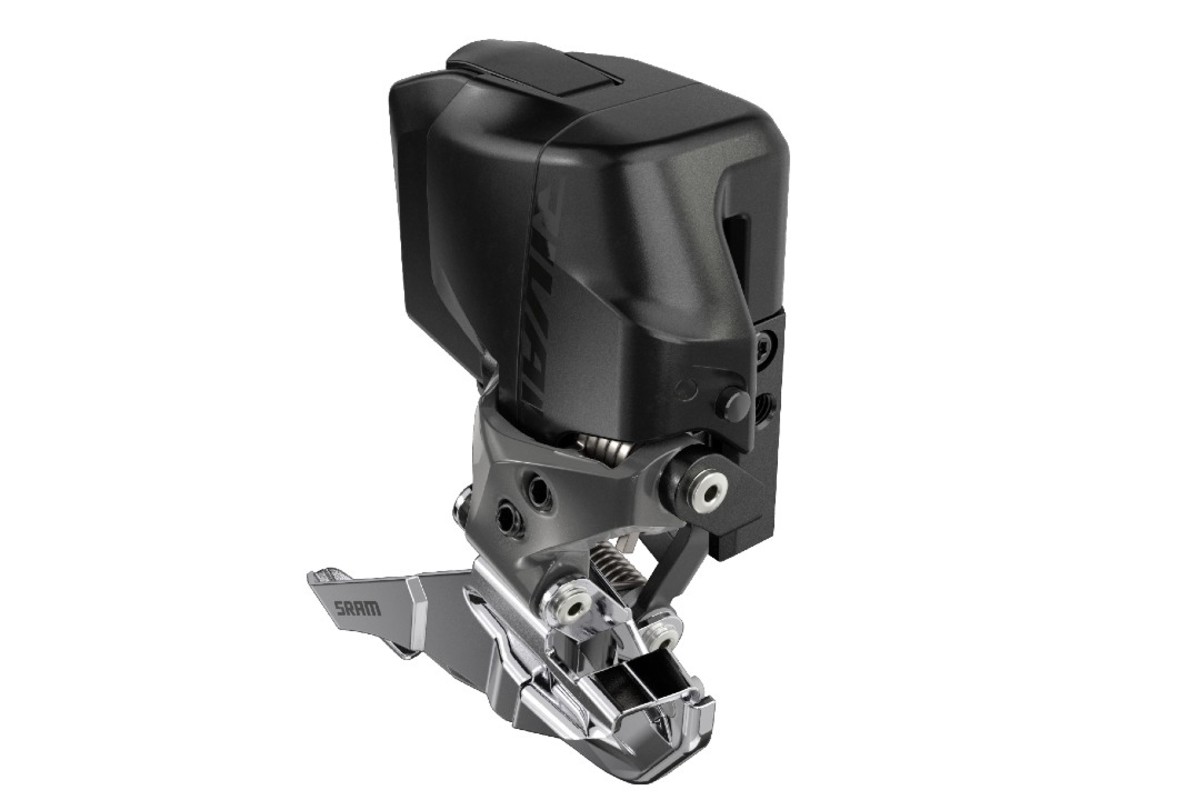Until now, a bike with electronic shifting was cool, but expensive—easily costing more than $5,000. Like a Tesla Model S, it was a thing you aspired to, especially if you understood what it might mean. In the case of that Tesla, you’d be buying cachet, fun, and lower your carbon footprint. In the case of electronic shifting on a road bike, the precision of never missing a shift—which can derail the chain and in a worst-case scenario, lock the back wheel and cause a dangerous skid—is definitely desirable, but that’s more like the starting point.
With SRAM’s new Rival eTap AXS, shifting isn’t just electronic—it’s wireless, between the shifter(s) on the bar and the derailleur—or derailleurs. (Either, because you can choose a 1x front chainring or a double front chainring, so you may have a front and rear derailleur, or only a rear one.)

Key with wireless is that there are no ugly lines snaking rearward, and you don’t have to sweat cable stretch that causes shifting to get cockeyed. Basically, this system will never need adjusting, and it always pre-reads chain alignment before executing a shift. And it can be set up to also shift the front up or down, so you’re not executing a shift that would actually result in a redundant ratio. Further, gear changes can be as fast or faster than mechanical, especially when shifting to an easier gear, where mechanical drivetrains require a lot of leverage to tug on a cable; here, servos do that work, so you’re not stuck pounding a too-hard cog as you hit a sudden incline.

Oh, and of course, not having cables or wires littering your bike results in a cleaner aesthetic, too.
FYI: Power comes from a battery fitted to the rear derailleur; simply recharge the block in a cradle similar to what you might use for your DSLR camera battery. Per charge life is roughly 60 hours of riding.
Interestingly, SRAM really knows its customers, so the new system isn’t just electronic and wireless but highly versatile, too. For instance, the crank arms were built from the start to reach around the bottom bracket and chainstays, so that on a bike frame designed to accommodate wider road or mountain bike tires, there’s still clearance. Given the preponderance of road bikes with fatter rubber, not to mention gravel rigs exploding onto the market, that’s a very smart play.
Further, SRAM enables a single chainring choice at the front, anywhere from 38-tooth to 42-tooth options, with either road or mountain bike bottom brackets. If this sounds too inside baseball, the gist is that eTAP AXS is going to work on LOTS of bikes, and rear cassette ranges are very broad, too. Astonishingly so. For instance, if you want, you can either use the new Rival eTap AXS 12-speed cassettes in 10-28T up to 10-36T configurations, or SRAM’s existing Eagle AXS rear derailleur, with a 10-50T or 10-52T cassette. In plain English: These options enable the widest possible gear range—so, no matter how steep the terrain is, you can tackle it. And because of this spread, you also won’t be spun out on flat ground with too small of a top gear.
And not only is SRAM bringing down the cost of e-shifting, it’s adding a power meter capability built right into the cranks at only roughly $200 more than cranks without wattage sensing. That’s massive, because knowing your wattage enables training smarter (and not overtraining), and your output is automatically bounced to SRAM’s AXS Mobile App. Since training with power meters, like electronic shifting, has until now been really pricey (or been limited for users to a single bike), this new capability now makes it way easier to have a single training tool across your road, gravel, and mountain bikes. Also, the power meter will happily chat with other training apps and devices, like Garmin cycle computers etc., to enable easier tracking during interval routines.
As for pricing, SRAM says it expects the bulk of Rival eTap AXS to come on newly purchased bikes; if you want to upgrade your existing drivetrain, here’s the skinny:
Dual front chainring with power meter: $1,639
Dual front chainring, no power meter: $1,420
Single front chainring with power meter: $1,409
Singe front chainring with no power meter: $1,190
More at sram.com
from Men's Journal https://ift.tt/3tn22gb





0 comments